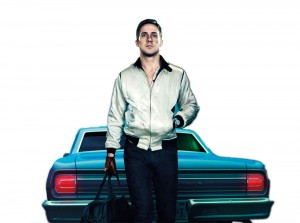Action films sweep viewers away with tantalizing scenes
Dad won’t see a romantic comedy, Mom refuses to watch a Jackass-inspired flick and the teenager won’t sit still for a mystery film. What is the nuclear family to do? Many this weekend will compromise with Drive, the new action flick starring Ryan Gosling as a stunt driver who earns pocket money through crime.
The film already picked up an award at the Cannes Film Festival, but many people just care about the car chases. In a few months, that same family may also compromise with The Three Musketeers, Sherlock Holmes: A Game of Shadows or the new Mission: Impossible — all promising action movies with something everyone can enjoy.
Action movies often fall into two categories: brainless spectacles of explosions with tepid plots hardly worth the popcorn and truly pulse-pounding films that get the adrenaline rushing in ladies and gents alike.
Neither type tends to charm the Academy, but a good action film is still a cathartic afternoon jaunt. A narrow gap exists between an awesome action flick and a horrible one, but where exactly is the fault line?
Let’s look at Fast Five, Kill Bill, Die Hard and Indiana Jones: Raiders of the Lost Ark. These films, completely different in style, all received box office and critical acclaim as furious action flicks.
Fast Five likely won’t become a hallmark of action cinema, but it redeemed the flagging franchise and gave girls and guys alike something to ogle. While the serviceable screenplay comes up a tad short, the classic heist plot is well-served by the car chases and constant energy.
Most expected the film to drag the series further into its hackneyed depths. Instead, it scored a respectable 78 percent on Rotten Tomatoes, a site that gives an aggregate rating based on film reviews from multiple critics. What alchemy did Fast Five’s director Justin Lin perform to turn a potentially lackluster waste of money into a fine summer kickoff? He did enough — just enough plot and just enough characters. That way, the film could focus on why people see action films in the first place — entertainment.
A good plot for an action film is not the same as a good plot for mystery. It must be interesting but not too complex, lest the plot get tangled in its own tortuous threads. Take Quentin Tarentino’s Kill Bill Vol. 1 and 2: Despite the wonky chronology and flashy dialogue, the story is still just a woman’s roaring rampage against the people who did her dirt.
Think back also to 1988’s Die Hard, a story that starts with detective John McClane locked in the same building as a terrorist. The ass-kicking promptly commences in all of its bloody glory.
A simple but effective plot allows for more stylistic creativity and smaller details. Adding more time for complicated triple-crosses, red herrings and crazy revelations may make a great David Fincher film, but in Kill Bill or Die Hard these would just take away from The Bride and McClane busting faces, which is the film’s main draw.
Die Hard and Kill Bill also sport strong characters, but they are not all that complex. Once again, bold strokes speak louder than subtle ones. Forged by the superteam of Steven Spielberg and pre-Star Wars prequels George Lucas, Raiders of the Lost Ark gives audiences one such character in the fearless adventurer Indiana Jones. He’s larger than life and full of snark, but most of his rugged charm and nuance comes from Harrison Ford’s own skills. It’s easy to root for Indiana as he shoots Nazis and dodges boulders, and that’s not a bad thing.
Yet there can’t be a hero without a badass nemesis to fight. No one forgets Alan Rickman as Hans Gruber, who matched every ounce of McClane’s heroism with charismatic villainy. The quirky villains in Kill Bill made the film, from Lucy Liu as a Yakuza warrioress to Michael Madsen as a trailer-park assassin. Each has a backstory but is told in glimmers and one-liners, not drawn-out conflicts that mesh poorly with SWAT raids or Nazi attacks.
Finally, a good action film has style — that glittering quality that makes its explosions and gunfights different than those of every other film. Tarantino used Western and martial-arts films as an inspiring motif. Indiana Jones brought in archaeology, adventure and whips. In Fast Five, Lin used precise stunts and camera tricks to make his car chases and standoffs spark twice as much as its predecessor.
Drive, too, looks to potentially be an action film that uses its car stunts and explosions as a thrill ride. Action flicks might not sweep the Oscars, but that does not mean they haven’t swept us away. Films are supposed to entertain and sometimes nothing does that better than a gun battle. If looming midterms and finals are begging for a catharsis, check out a few potentially gifted action flicks in the near future: The Three Musketeers, Sherlock Holmes: A Game of Shadows and Mission: Impossible IV.
Mimi Honeycutt is a senior majoring in print and digital journalism. Her column “Cut to Frame” runs Fridays.
